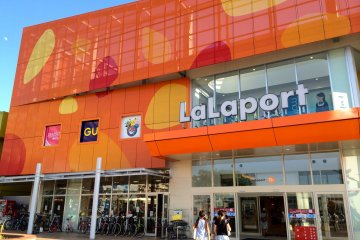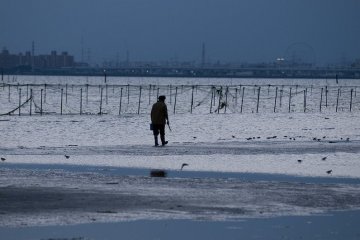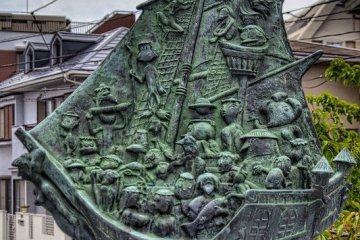Overview
Funabashi City, once the hunting grounds of the shogun and a bustling market town, today is a bedroom community for neighboring Tokyo. Served by nine different rail lines providing connections between Tokyo and central and southern parts Chiba Prefecture, it’s a place to transit to scenic places on the Boso Peninsula. However, don’t over look Funabashi. The city is replete with a great amusement park, history and city center.

Keep an eye out for the Ebi River which flows through the city into Tokyo Bay. This river was once wider and deeper, and like many rivers in the region, wilder. In centuries past, to provide access the markets on either side of the river, boats were lined up in a row, and planks were placed on them to create a bridge. This is how the town is said to have got its name. Funa means boat, and hashi, bridge. Cross thirteen small bridges which are decorated with statuary and interpretive signs that illustrate the history of the city.

Parks and Nature
The city is perhaps best known for Funabashi Andersen Park. You might wonder why this story book landscape is transplanted to suburban Chiba Prefecture. It’s because Odense, Denmark, the birthplace of the beloved story teller Hans Christian Andersen, is sister city to Funabashi. Stroll and play in the recreation of a Danish country town, photogenic flower gardens, water park, boat pond, and children’s museum. Save some money at this economical alternative to Disney Resort.
Funabashi Sanbanze Seaside Park on Tokyo Bay is a tide flat. Dig for clams in the spring. On clear days, see Mt. Fuji while you squeeze sand between your toes. Also at the park is Funabashi Sanbanze Environment Learning Center. Learn about the ecology of the area and environmental issues it faces.

Landmarks and History
Oohi Shrine, also known as Funabashi Daijingu, is the oldest shrine in the city, with a history spanning nearly two millennia. This shrine, associated with Ise Shrine, is dedicated to Amaterasu, the sun goddess. In the precincts of the shrine see the historic lighthouse, Tomyodai. This three story wooden lighthouse with its distinct hexagonal shape, listed as a Chiba Prefecture cultural property, is the last of its kind.
In Funabashi harbor visit the decommissioned Shirase 5002 icebreaker. This research vessel explored and documented the environment of the Antarctic for 25 years. Learn about climate and meteorology research center. Take a tour of the ship with former crew members.
Dining and Shopping
Around Funabashi Station are shopping arcades that appeal to the budget-minded. Walk south of Keisei Funabashi Station to Japan’s largest Daiso, Giga Funabashi. Shop for 100 yen treasures on seven floors.
Also in the vicinity of Funabashi and Keisei Funabashi Stations are eateries that serve Funabashi sauce ramen. Try this post-war invention, a low-rent version of ramen, with Worcestershire sauce, pickled ginger, bean sprouts, cabbage, and seaweed flakes.
Overlooking Tokyo Bay is Sapporo Beer’s Chiba hub for Sapporo Black Label beer. Take a tour of the Funabashi brewery, gaze out on Tokyo Bay as you sip beer, and pick up some exclusive products at the gallery shop.
At LaLaport Tokyo Bay Shopping Center, walk along palm-tree lined boulevards and shop for both international and Japanese brands.









